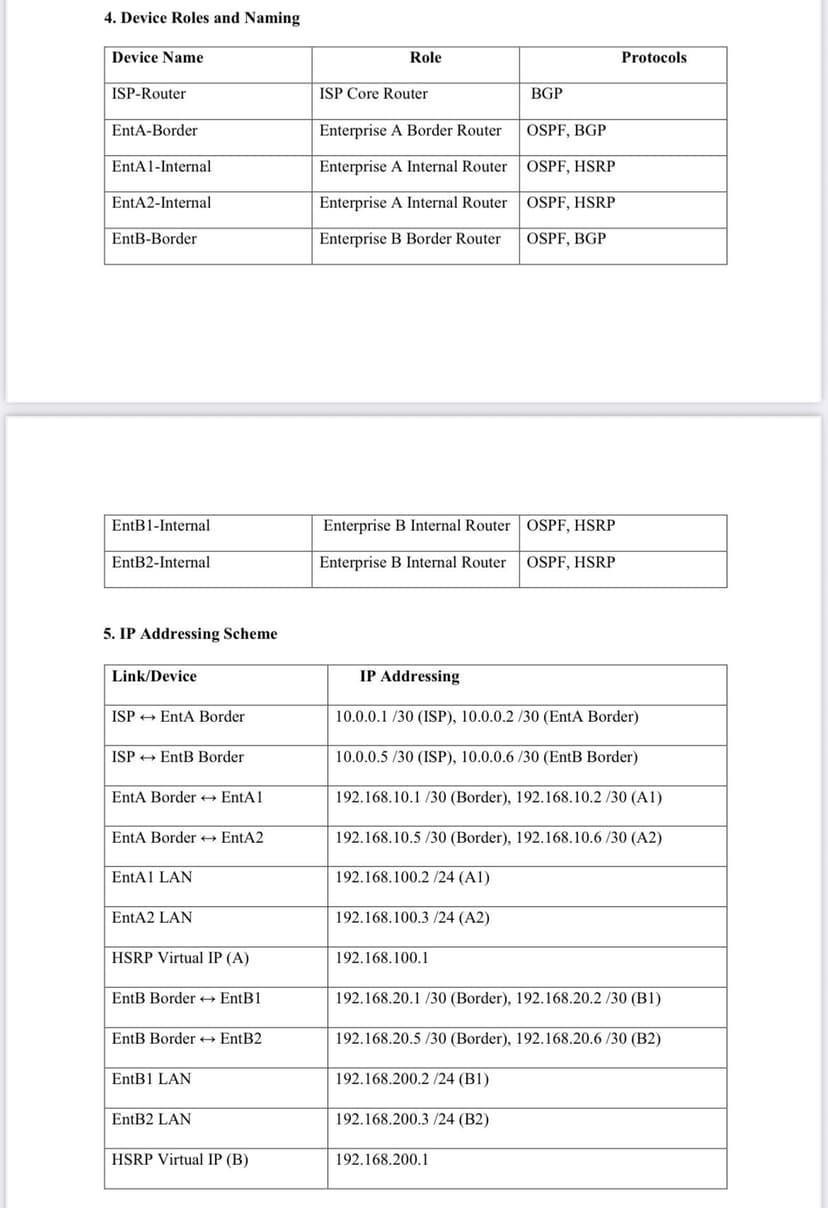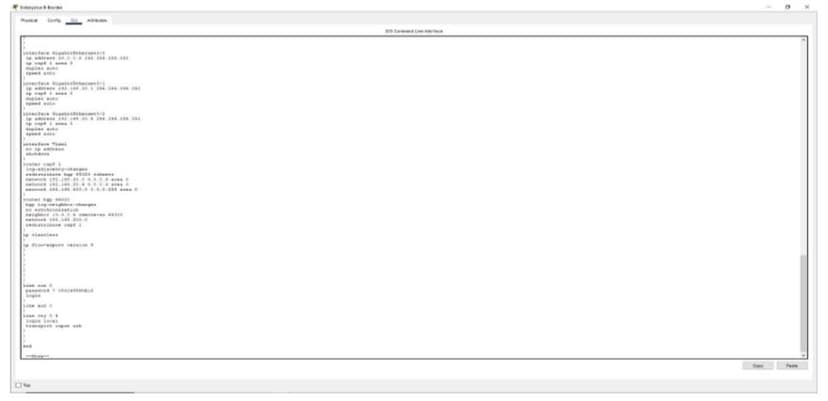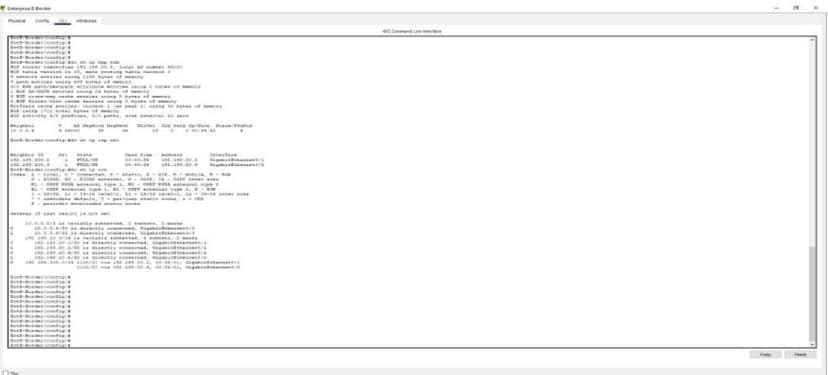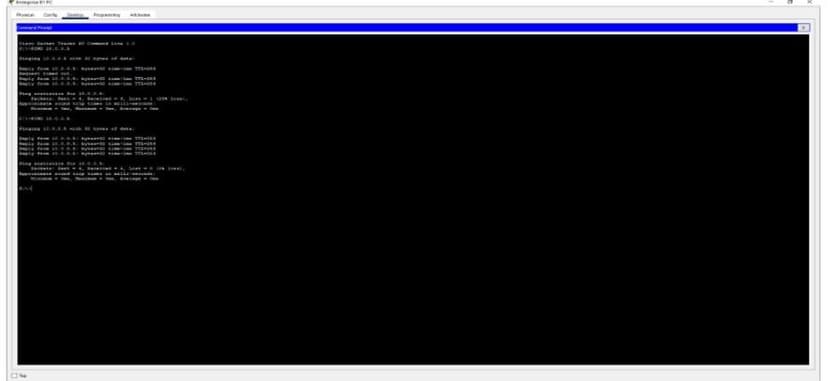Enterprise ISP Hybrid Topology with BGP, OSPF, and HSRP
1. Executive Summary This project demonstrates the design and simulation of a hybrid enterprise–ISP network using Cisco routers in Packet Tracer. The network integrates OSPF for internal enterprise routing, BGP for external ISP peering, and HSRP for gateway redundancy. The design reflects real-world best practices for high availability, scalability, and security, making it suitable for CCNP-level study and professional portfolios. 2. Project Objectives • Simulate an ISP providing connectivity to two enterprise customers. • Implement OSPF as the internal routing protocol for each enterprise. • Use BGP for external routing between the ISP and each enterprise border router. • Provide gateway redundancy for LANs via HSRP. • Secure routers using SSH, enable secret, and console passwords. • Demonstrate route redistribution between OSPF and BGP. • Validate end-to-end connectivity and failover scenarios. 3. Topology Overview • ISP router connects to two enterprise border routers via /30 links. • Each enterprise has two internal routers serving separate LANs. • HSRP provides a virtual gateway for each enterprise LAN. • OSPF runs internally; BGP manages external ISP connections. • Route redistribution allows internal enterprise networks to communicate through the ISP. 4. Routing & Redundancy OSPF: Single area (Area 0) within each enterprise for dynamic routing and fast convergence. BGP: eBGP between ISP and enterprise borders for scalable, policy-based routing. HSRP: Configured on LAN interfaces for seamless failover using virtual IPs. Route Redistribution: Enables communication between OSPF and BGP domains; default routes injected for internet access. 5. Security Implementation • SSH enabled for secure remote access • Enable secret and console passwords configured on all routers • Service password encryption activated • User accounts created for SSH login 6. Key Configuration Examples HSRP (EntA1-Internal) interface g0/1 ip address 192.168.100.2 255.255.255.0 standby 1 ip 192.168.100.1 standby 1 priority 110 standby 1 preempt OSPF (EntA-Border) router ospf 1 network 192.168.10.0 0.0.0.3 area 0 network 192.168.100.0 0.0.0.255 area 0 redistribute bgp 65010 subnets default-information originate BGP (EntA-Border) router bgp 65010 neighbor 10.0.0.1 remote-as 65000 network 192.168.100.0 mask 255.255.255.0 redistribute ospf 1 7. Testing & Validation • Ping across enterprises to confirm end-to-end connectivity • show ip ospf neighbor to verify OSPF adjacency • show ip bgp summary to confirm BGP peering • show standby to validate HSRP failover • SSH login tested for secure access • show ip route checked for proper route learning and redistribution 8. Lessons Learned & Real-World Relevance • Redundancy: HSRP ensures high availability of user gateways • Scalability: OSPF and BGP allow multi-domain routing for large organizations • Security: SSH and password policies are critical for enterprise networks • Interoperability: Redistribution between OSPF and BGP enables seamless enterprise–ISP integration • Troubleshooting: Learned to diagnose adjacency, route advertisement, and failover issues 9. Conclusion This project demonstrates a robust, secure, and redundant enterprise–ISP network design using industry-standard protocols and best practices. The skills gained are directly applicable to real-world enterprise and service provider environments, showcasing advanced understanding of both design and implementation.
Team Size
1
Technologies
10

Technologies Used
- Successfully simulated end-to-end connectivity between ISP and two enterprise customers.
- Demonstrated gateway redundancy with HSRP, ensuring seamless failover for enterprise LANs.
- Validated dynamic internal routing with OSPF and policy-based external routing with BGP.
- Configured secure router access using SSH and encrypted credentials.
- Developed strong skills in multi-protocol integration, troubleshooting, and enterprise–ISP network design.
Project Gallery




